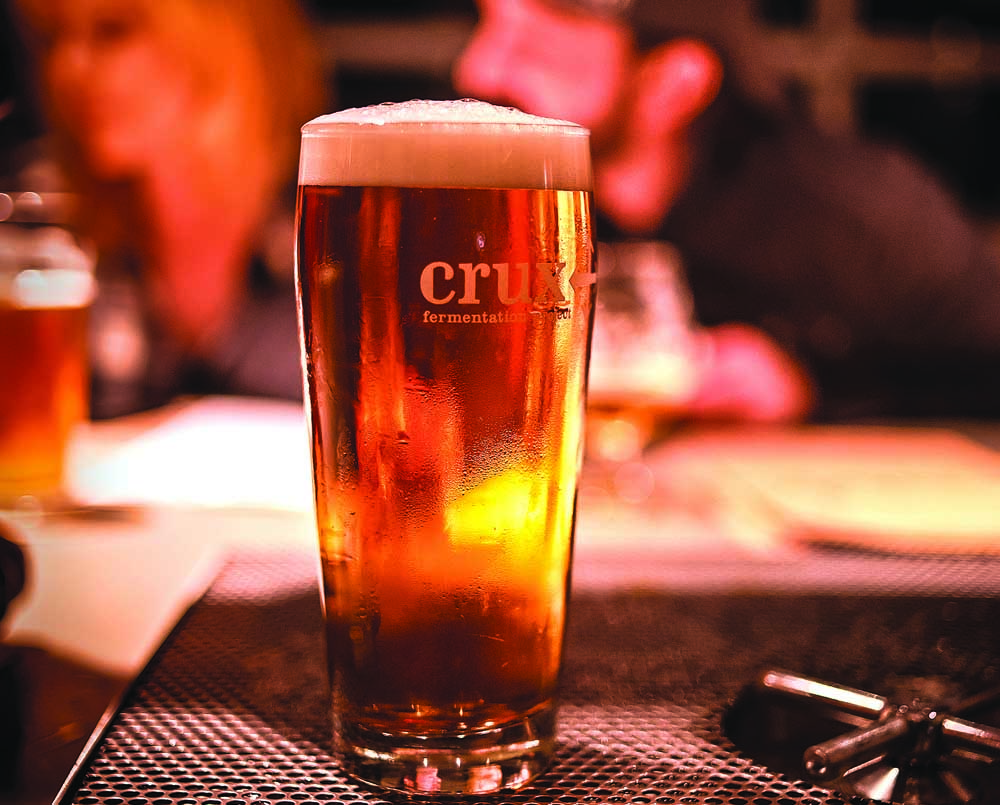A look at session beers
Published 12:00 am Friday, June 13, 2014

- A look at session beers
The craft beer boom brought a new era of creativity to the beer industry, and with that creativity came bigger beers with more body, flavor and alcohol.
But brewers have realized big beers need a counterpart.
Enter session beers. At less than 5 percent alcohol, they are perfect for the upcoming summer season, for weekend barbecues that last all day or a night out with friends that doesn’t end after two beers.
According to BeerAdvocate.com, an authoritative craft beer online community, the name “session beer” dates back to World War I, when workers were only allowed to drink during set sessions throughout the day. A session beer, traditionally a British mild or bitter, was the most logical brew for a session because the workers could have a couple beers and still return to work coherent.
“But don’t be fooled,” the website posted in 2005. “Just because a beer is lower in (alcohol) doesn’t mean (it’s) lower in flavor. All over the world, there are thousands — tens of thousands — of beers being made at 5 percent (alcohol-by-volume) or lower in every conceivable style.”
Zach Beckwith, head brewer at Three Creeks Brewing in Sisters, is one of many Central Oregon brewers offering a year-round session beer with his Stonefly Rye Ale. At 4.6 percent alcohol by volume, Stonefly doesn’t sacrifice flavor or body with a lower alcohol percentage.
“It shows a brewer’s skill to make something that’s a little more on the subtle side,” Beckwith said. “It won’t jump out at you with one flavor or the other.”
Larry Sidor, owner and brewmaster at Crux Fermentation Project, said the alcohol content is in the hands of the brewer, not the ingredients in the beer. By controlling different mashing temperatures and times, different enzymes are released into the wort. Mashing, or steeping grain in hot water, at a higher temperature will yield fewer fermentable sugars, creating a bigger body and sweeter beer. Because session beers are typically enjoyed in the sunshine, brewers have to use “tricks” to keep the beer balanced, Sidor said.
“Most people struggle with that quite a bit,” he said. “That, as well as working with hops. The big problem with session beers is … delivering hop aroma and flavor without it being totally unbalanced.”
Although Crux typically offers four beers under the 5 percent ABV mark, depending on the season, its Off Leash NW Session Ale is the brewery’s flagship for session beers.
“When you drink Off Leash, it has a significant hop aroma and flavor to it but not overwhelming,” Sidor said. “Some of these beers you get are really hop-centric beers that stay on your palate all day. That’s not bitterness, that’s ill-conceived use of hops.”
Beckwith said the key to creating a great session beer is making a beer with a session in mind, not making a session beer for session beer’s sake.
“You want to have a good idea of what you want the beer to taste like to begin with,” he said. “You don’t look at paper and say you want this low ABV or a lower-alcohol version of this beer.”
In the end, Beckwith said it’s about the community craft beer has created.
“It comes back to the social aspect of drinking,” he said. “I’ve seen the growth of beer culture. The stereotype is someone in front of a computer drinking this big, rare beer all by himself. Session beer lends itself to pub culture. The beer isn’t necessarily the entire focus of the night. Instead, it’s the complement to the night.”
— Reporter: drinks@bendbulletin.com






